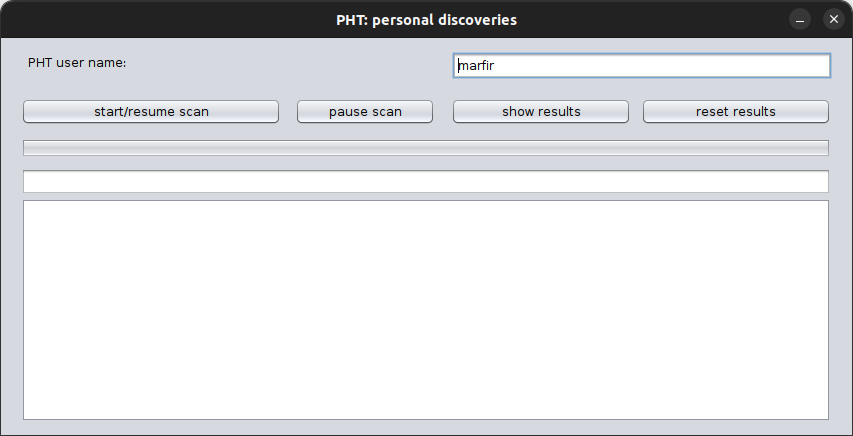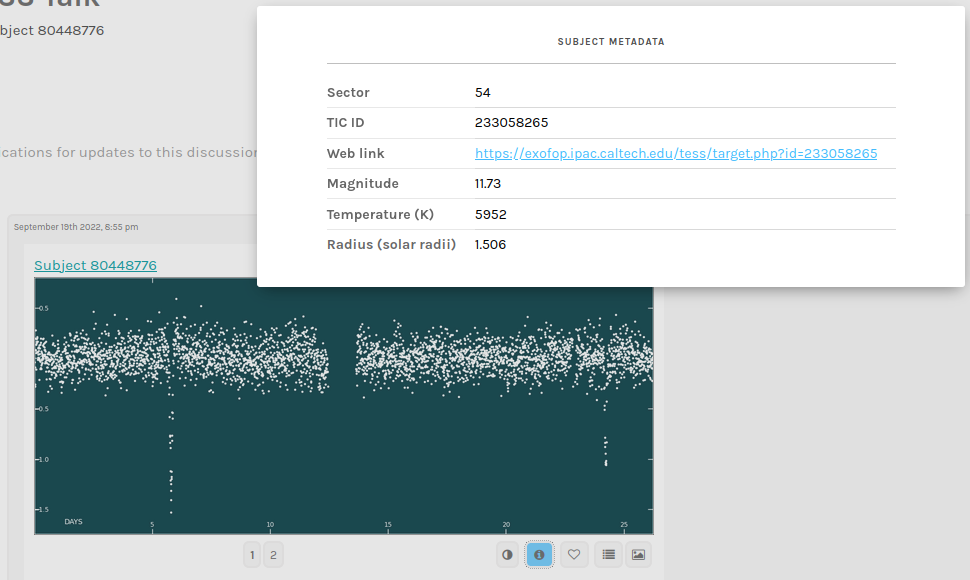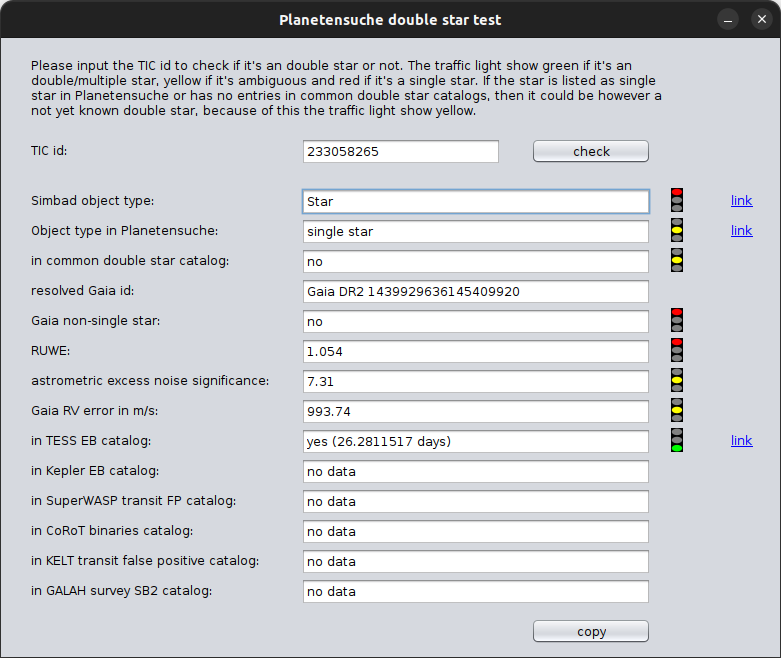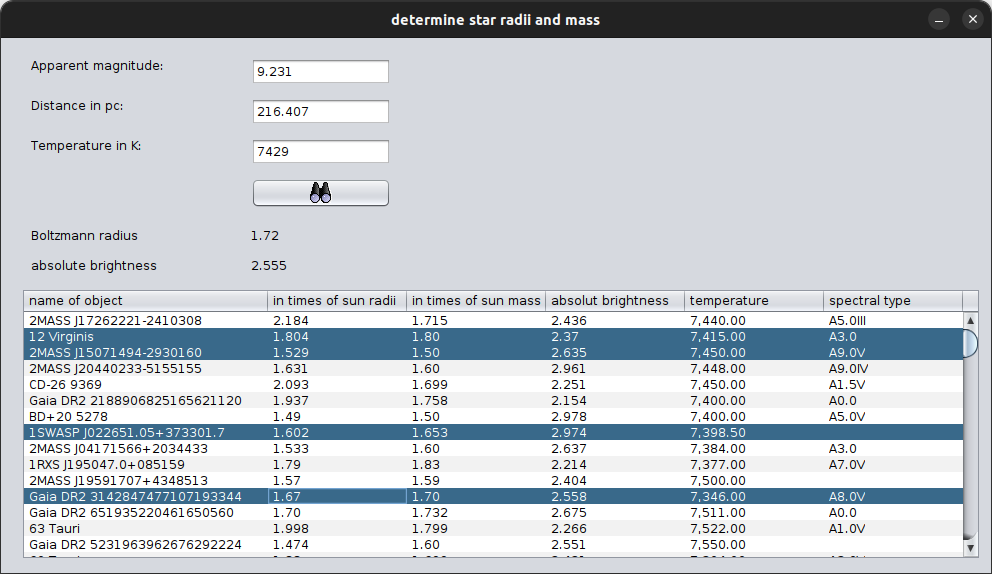Tools for Planet Hunters TESS (PHT)
You can help to find new exoplanet candidates on PHT. If you are an PHT contributor Planetensuche can help you in different ways:
find out which exoplanet candidates you have found
To find out which exoplanet candidates you have found please open the database module, open the menu bar "specials" and choose "PHT: personal discoveries".
You need to input your user name that you using on PHT in the input field and then you can start the scan. The scan needs some hours, because of this you can stop and resume it anytime. If the scan found a match between your PHT transit marks and a planet candidate then you can see it in the results dialog.
Due to the data situation, the search cannot be 100% correct. You still have to check the hits again. Since Planentensuche 6.17 the entries can be edited in the result dialog.
see screenshots below:


find out if a star is a double star or not
Since Planetensuche 6.17 there is a new tool to find out if a star is a double/multiple star or not for a given TIC number. This is helpful in the case that a v-shaped dip is seen in a light curve and it must now be ruled out that it is a stellar transit by an eclipsing binary. For this you need only to copy the TIC id from the metadata of the subject and insert into the tool.
The tool try first to fetch different soft indicators from the Gaia-DR3 catalog (RUWE, astrometric excess noise significance and radial velocity error) and after them it check if the star is part of a known eclipsing binary catalog.
Fields worthy for interpretation:
see screenshots (example for the eclipsing binary TIC 233058265):


estimate stellar mass and radius
Sometimes no information about the stellar radius and/or mass is available. You can estimate these parameters when other data about the star are available. Please open the database module and select "Determine star radius and mass" in the "Extras" menu.
In the dialog you have to enter some data (e.g. from Exofop or Simbad) and then click the "Search" button. Similar stars are displayed in the results list. Find a few there and determine the average of the radius and mass. The list is sorted by closest match (similar stars are at the top of the list). You can then use the parameters for radius and mass determined in this way, e.g. in pyaneti.
The following screenshot shows a star on Exofop where you can find the necessary input parameters. In this example, the star's radius and mass are known. The screenshot of the "Determine star radius and mass" tool shows that similar values would be obtained. You can use the fluctuation range as an error value in pyaneti.


estimate the planet type
To estimate the type of a planet please open the database module and choose "determine planet type" from the "specials" menu bar. Currently it's only possible to make an estimate based on the planet radius. More parameters will be used in future releases to get an better estimation.
find out which candidates and confirmed planets was found by PHT project
Open the database module and select "Discovery date of exoplanets" in the menu bar. Now you can choose the discovery team/project, please select "Planet hunters TESS project (zooniverse)". Now all confirmed planets will be visible. If you like to see also all planet candidates then deselect the checkbox.
show exoplanet (candidates) in different charts
Planetensuche contains all confirmed exoplanets. Since version 6.14 also all exoplanet candidates from professional astronomers are included. Also new charts are available, some of them specifically for PHT. Please open the simulation module and choose the charts that you like to see.